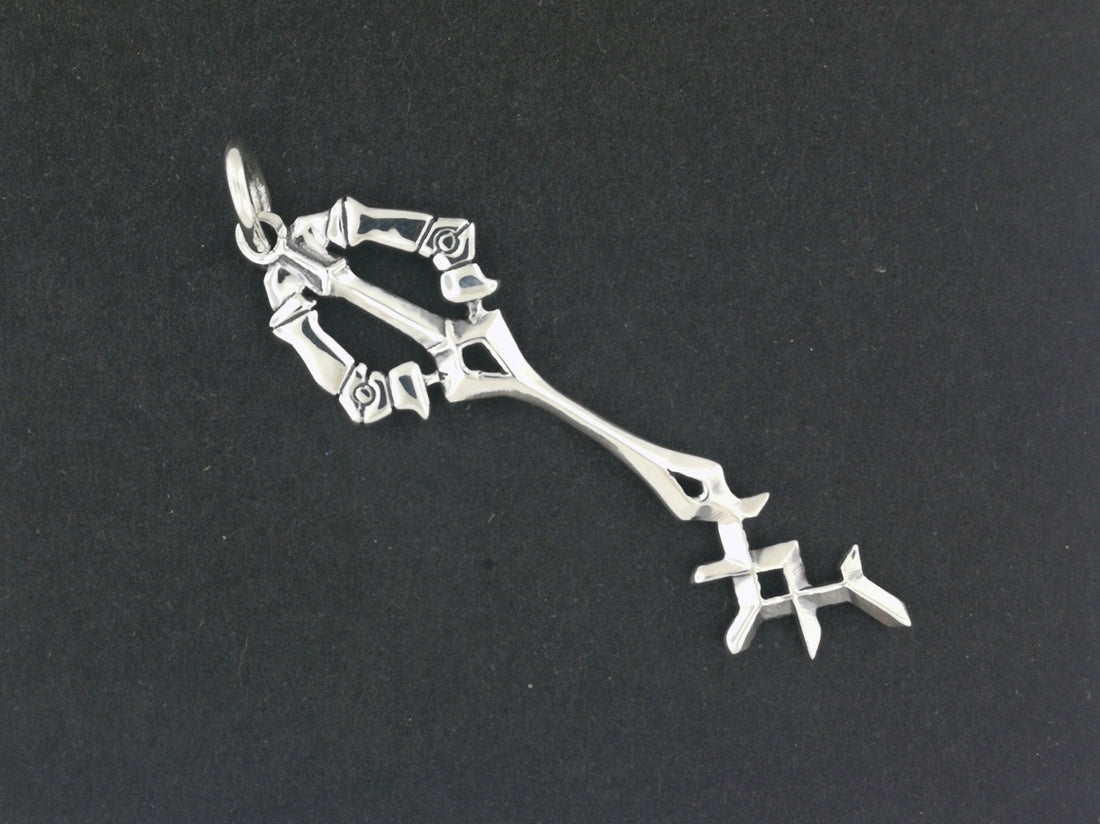
Material Mondays: Let's talk 925, Sterling Silver!
Sterling Silver, arguably one of the most versatile alloys to exist to date.
We use it in currency, jewelry, and everyday items like cutlery. Yet, there are so many questions! What is it? Where did it come from? What is in the Sterling Silver that I sell to you? Why does it tarnish?
Let's have a look at some fun facts about Sterling Silver, and get acquainted with the 925!
What is Sterling Silver?
Sterling Silver is an alloy of silver that contains 92.5% by weight of silver and 7.5% of weight by other metals. (Copper is usually the other metal of choice) The Sterling Silver standard has a minimum millesimal fineness of 925 (the weight of the fine metal therein- 'silver')
What is in the Sterling Silver I sell to you all?
My products all have the same percentages as the common 925; 92.5% fine silver and 7.5% copper.
Where did it come from, the origins?
The Sterling Alloy originated in Continental Europe and was being used for commerce as early as the 12th Century in what is now Northern Germany.
In England, the composition of Sterling Silver was subject to official 'Assay' (a compositional analysis of ore, metal or alloy) some time before 1158 during the reign of Henry II. It's purity however, was regulated for centuries prior in Saxon times.
The first legal definition of Sterling Silver appeared in 1275 specifying that 12 Troy ounces of silver for coinage should contain 11 ounces 2 1/4 pennyweights of silver and 17 3/4 pennyweights of alloy with 20 pennyweights to the Troy ounce. This equated to roughly a millesimal fineness of 926.
Over on this side of the pond in Colonial America, Sterling Silver was also being used for currency and general goods.
Around 500 Silversmiths between the years 1634 and 1776 created items in the "New World" from buckles to coffee pots. They lacked an Assay office however, so they stuck with the standard set by the London Goldsmiths Company which called for 91.5%-92.5% by weight fine silver and 8.5%-7.5% by weight copper. They relied on their own status to guarantee the quality of their products.
The well developed European techniques were also utilized by the Colonial Silversmiths such as Casting, Hammering and Flattening the silver. Hammering being the most time consuming of the techniques, and accounting for the majority of labour costs.. that is, until Paul Revere joined the scene!
Paul Revere was regarded as one of the best Silversmiths from the Golden Age of American Silver.
After the Revolutionary war, Paul acquired a silver rolling mill from England. This purchase not only increased his rate of production, but he was also able to sell silver at appropriate and uniform thickness to other Silversmiths. Paul retired a wealthy artisan. Though celebrated for his hollowware, Pauls fortune came primarily from low end goods like flatware produced by the mill.
Why does my Sterling Silver Tarnish over time?
Silver on it's own chemically isn't very reactive at all. It doesn't react to oxygen or water at normal temperatures, so it doesn't form a silver oxide easily.
That black tarnish a.k.a. silver sulphide is actually caused by atmospheric pollution and low level ozone. With Sterling Silver having a lessened purity of silver, it's potential for tarnishing or corrosion increases as the combined alloy (copper) may react with oxygen in the air. Knowing the potential for tarnish, how do you clean your Sterling Silver?
How to clean your Sterling Silver?
There are many home remedies for this that won't break your bank. Better Homes and Gardens compiled a great article on this. One of the excerpts from this article for small silver items read as follows:
What You'll Need
- Boiling water
- Aluminum foil
- Pan or pot
- Baking soda
- Kosher salt
- Soft cloth
How to Clean Small Silver Items:
- Line a pot or roasting pan with aluminum foil. Make sure the foil covers the entire surface.
- Fill the pan with boiling water.
- Add 1/4 cup baking soda and 2 teaspoons of kosher salt to the water and stir. You should see bubbles form.
- Place silver pieces in the solution and mix gently so that pieces don’t ram into one another or the sides of the pan.
- Let sit for up to 5 minutes.
- Once cool, remove and dry thoroughly with a soft cloth.
So there you have it! A few fun facts on the 925, where it came from, common uses, and a few FAQ's answered!
I'll leave you with a quote from the great John Revere;
“There’s a time for casting silver; a time for casting cannon. If that isn’t in the red, it should be!”
